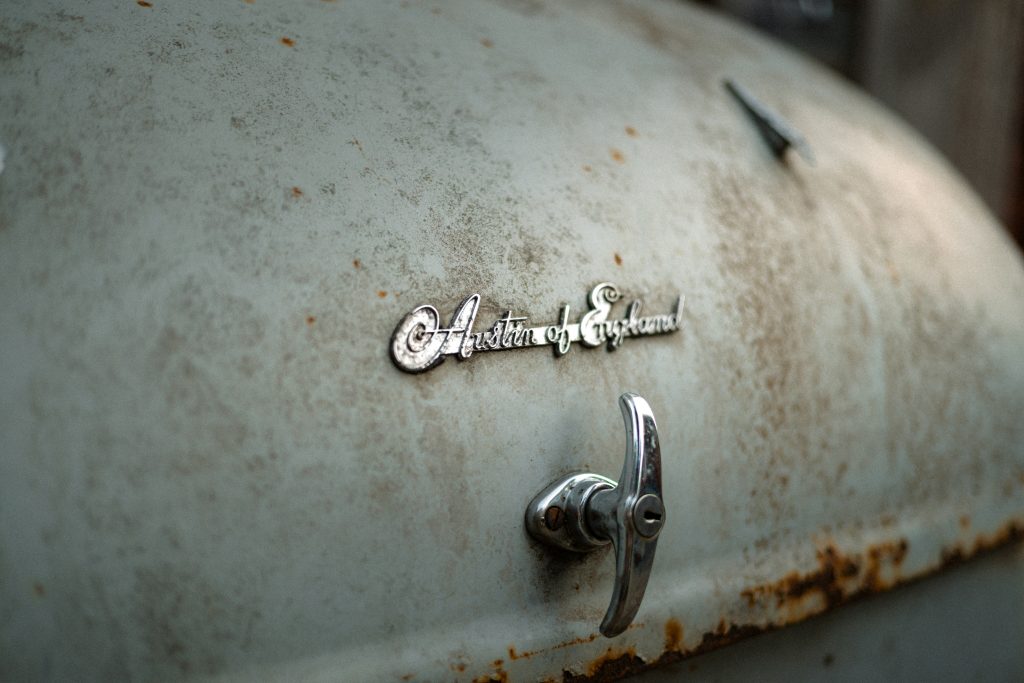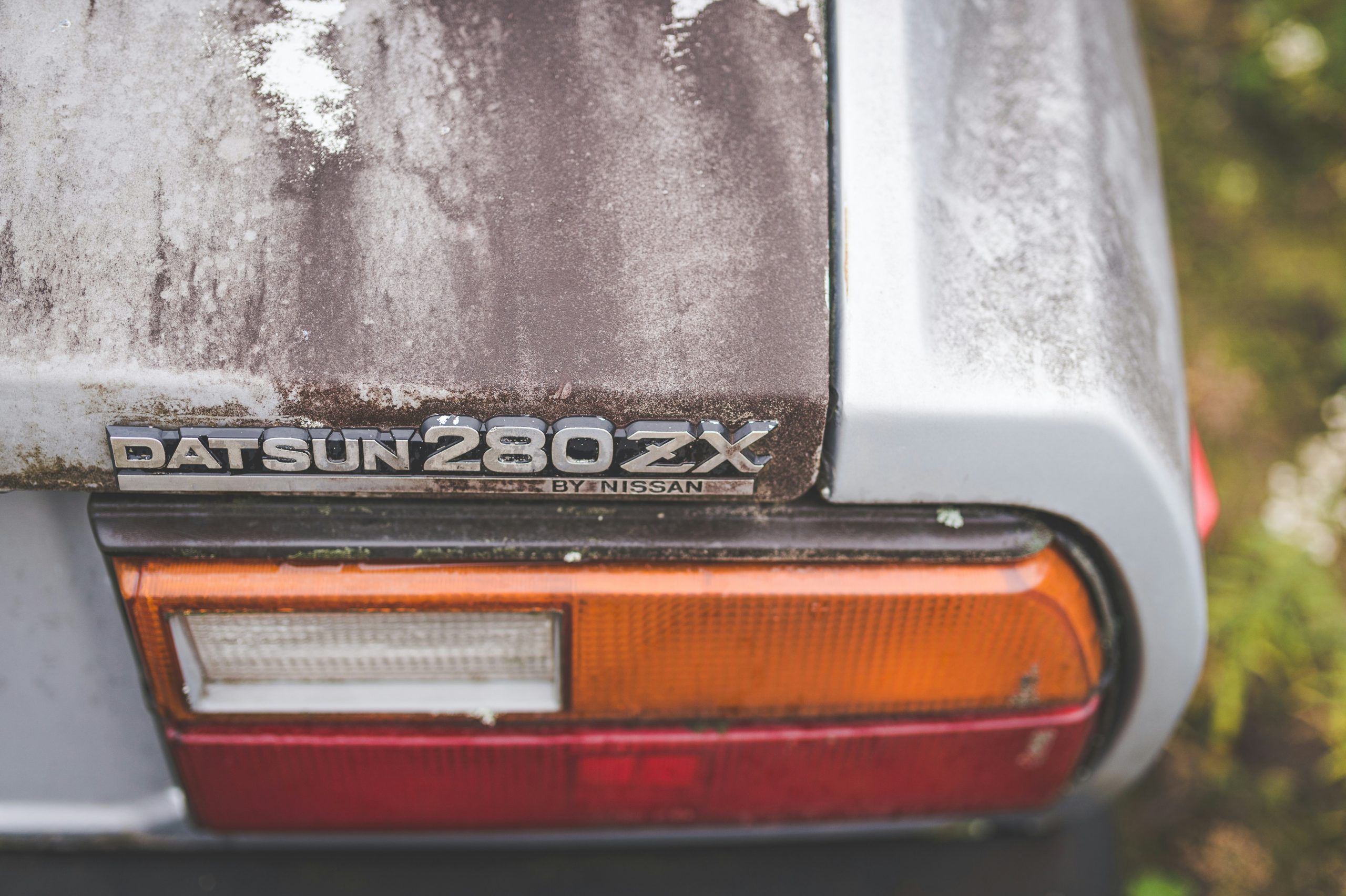Author: James Mills
Photography: Stephen Andrews, Austris Augusts & Tim Kuhn via Unsplash
It’s not all that long ago that today’s bonafide classic cars were nothing more fancy than a second-hand car.
Astons, Jaguars and Triumphs were bought over a mug of tea on a driveway or pint of ale in the pub car park. There were no highfalutin dealers with more glass acreage than the windows at Harrods and yachts moored in Monaco. You’d drive the car until it went wrong, fix it yourself or fashion a bodge and sell it onto some poor unsuspecting soul who’d drive off into the sunset, only to reappear two weeks later holding the wire wheel that overtook them in the outside lane of the A40. Tough luck.

But times have changed. Consumers have rights, for starters, and those DB5s, E-Types and TR6s went on to become sufficiently valuable that more often than not any remedial work would be left to the professionals. In many ways, they were the ‘modern-classics’ of their time, drifting slowly but surely from daily driver status to coveted weekend wheels.

That process is repeating itself with cars from the ’90s and ’00s. One moment they were a common sight on our roads, the next they’re a high-score mark in a well-thumbed copy of i-spy Cars.
When you see these so-called ‘modern-classic’ survivors, it’s often at a cars and coffee meeting. And in an age where social media amplifies the trend for cleaning cars to laboratory-like standards, they appear impossibly glossy, as though the paint is still drying thanks to costly coatings of carnuaba wax or ceramic finishes. It’s a sight to behold, and keeps the detailers – professional and amateur alike – busy.
But here’s the rub. Your modern-classic may well dazzle in an Instagram reel but it’s what lies beneath where the danger lurks.
Modern-classics have been designed and developed with modern know-how. They are the product of computer-aided design, wind tunnel testing, global safety requirements and enough regulatory red tape to gift-wrap around a Routemaster bus. In turn, this is what’s made them so useable.
When new, you wouldn’t have thought twice about using cars like the BMW M3 E46, Ford Focus RS Mk1, Porsche 911 996 or Subaru Impreza Turbo as daily drivers. They could handle a commute or school run, be parked with ease at the supermarket and handle hundreds of miles at a time without giving their driver so much as a hint of backache. But when you wanted to step on it, or tackle a trackday, cars like those and others of their generation were able to provide thrills without the spills. Because of this, they were driven throughout the seasons. Come rain or shine, salt or snow, the miles piled on in all weathers.

We probably didn’t appreciate it at the time, but I suspect most of us do now: this was peak-car era, when analogue ruled and the levels of performance perfectly complemented Britain’s B-road roads.
But it’s this usability that can be the downfall of a modern-classic. Poke around any modern-classic that’s clocked up average annual mileage and rust will rear its head. Drop away wheelarch splashguards, remove sill covers, release protective floor undertray sections, wrestle out the fuel tank, pull off the exhaust and lower the propshaft, rear subframe and axle, and – after several well-earned cuppas and Ginger Nuts – what lies beneath is likely to come as a shock.
That turn-key dependability and all-purpose practicality catches up with all too many of them. And if left unchecked, it could be what spells the end of the road, because while things may look beautiful on the surface, down below cracks will start to show.
Setting aside a weekend to deep-clean your pride and joy will always give you a sense of satisfaction. But better still would be time spent on a health-check of your car’s floorpan. I know from experience; when my BMW M3 E46 coupe turned 16, I took it to my specialist of choice to inspect the underside of the car. Sure enough, there was surface corrosion. And sure enough, once everything that needed removing to access the floorpan was removed, there was more…
We caught it in good time, so nothing more than a wire-wheel was needed to remove the signs of aging, followed by applications of Dinitrol rust killer, seam sealer, anti-stone-chip finish and cavity wax, with a smattering of Titan Silver underbody paint to finish things off. But if I’d left it a few more years, things could have been far more costly – as a quick search on YouTube will illustrate.
If there’s a message in all this, I suppose it’s this: conservation is nearly always more cost-effective than restoration. And given originality is prized, it makes even more sense to take the initiative, get that modern-classic on a ramp and find out what lies beneath.
So forget about a picture-perfect finish, put down that polishing cloth and focus on what’s going on where the eye can’t see.
Have you ever discovered an unexpected issue lurking under your modern-classic? We would love to hear from you in the comments below.







Excellent article! I have a 2010 E91 318D (N47 engine) currently at 153k…..yes, it’s not an 335D/335i or an M3, but it’s Tasman Metallic with saddle brown interior, which isn’t a common spec I’ve seen. My last E91 320D (N47 engine) MSport I took to 201k and the turbo died which BMW do mention as a failure mode (turbo pipe cokes up). So I know these models well, but upon inspection of my current E91 underneath….wow, not great. If these cars are to survive like the classics/historics, they need attention, otherwise the risk is that we already have all the classics/historics we’ll ever see.
A timely article as I gear up to spend these warmer and drier months to take all the different panels off my 2002 MB w220, currently at 186k miles and I am finding some corrosion not unsurprisingly (and especially for this model), Just got to keep on top of the underside, where most people seem to fear to tread.
Good advice. Rust proof your motor in the summer when its all dry!